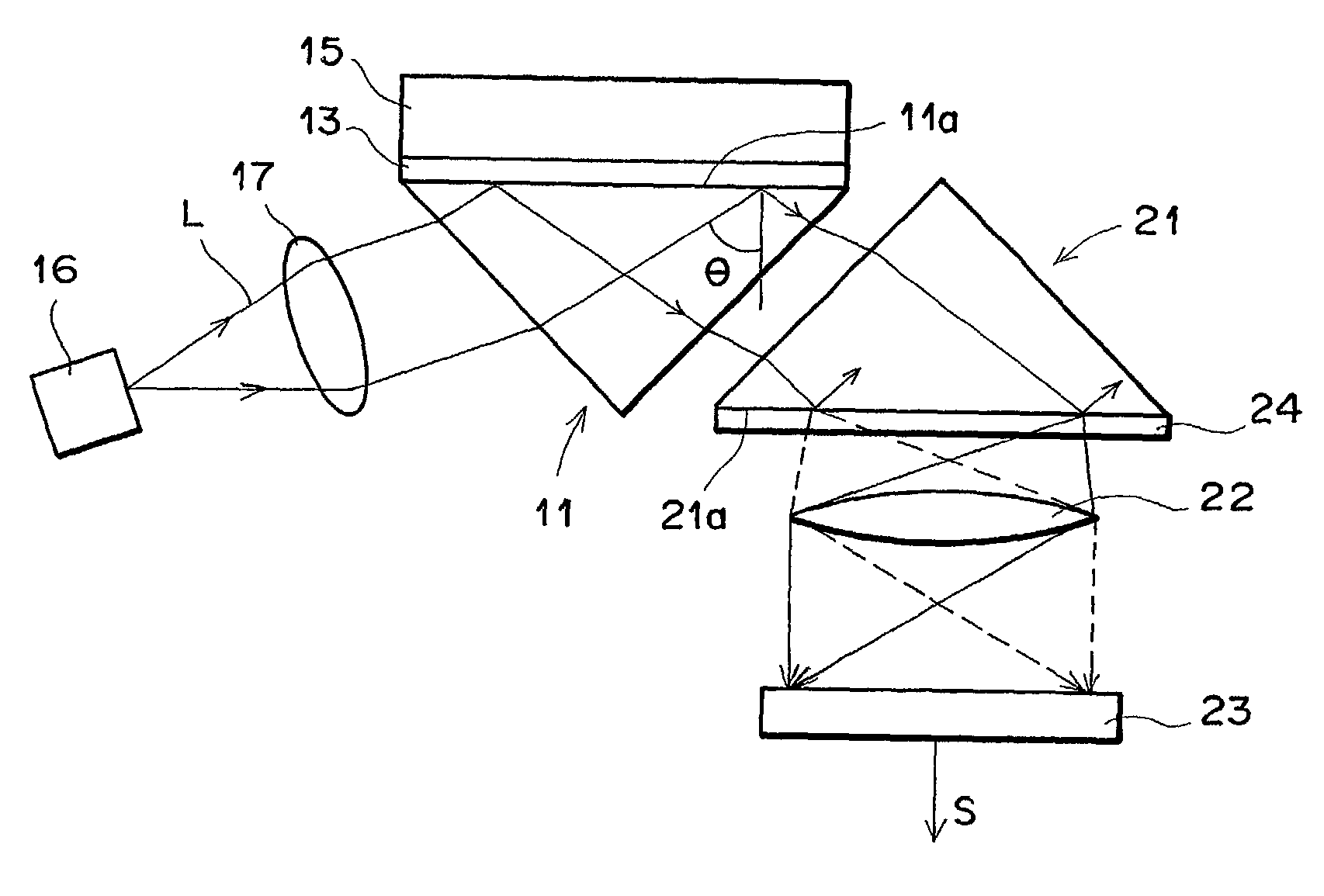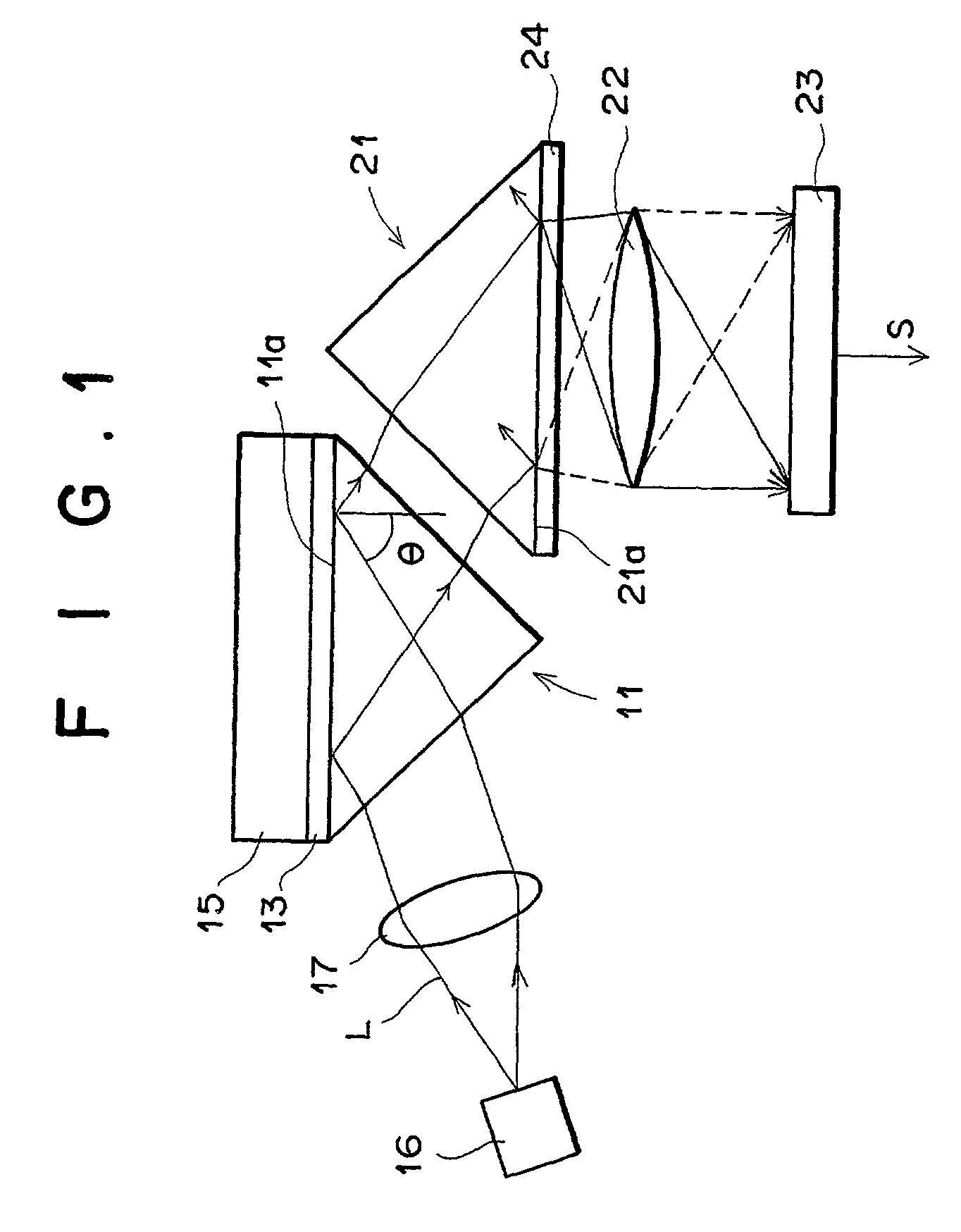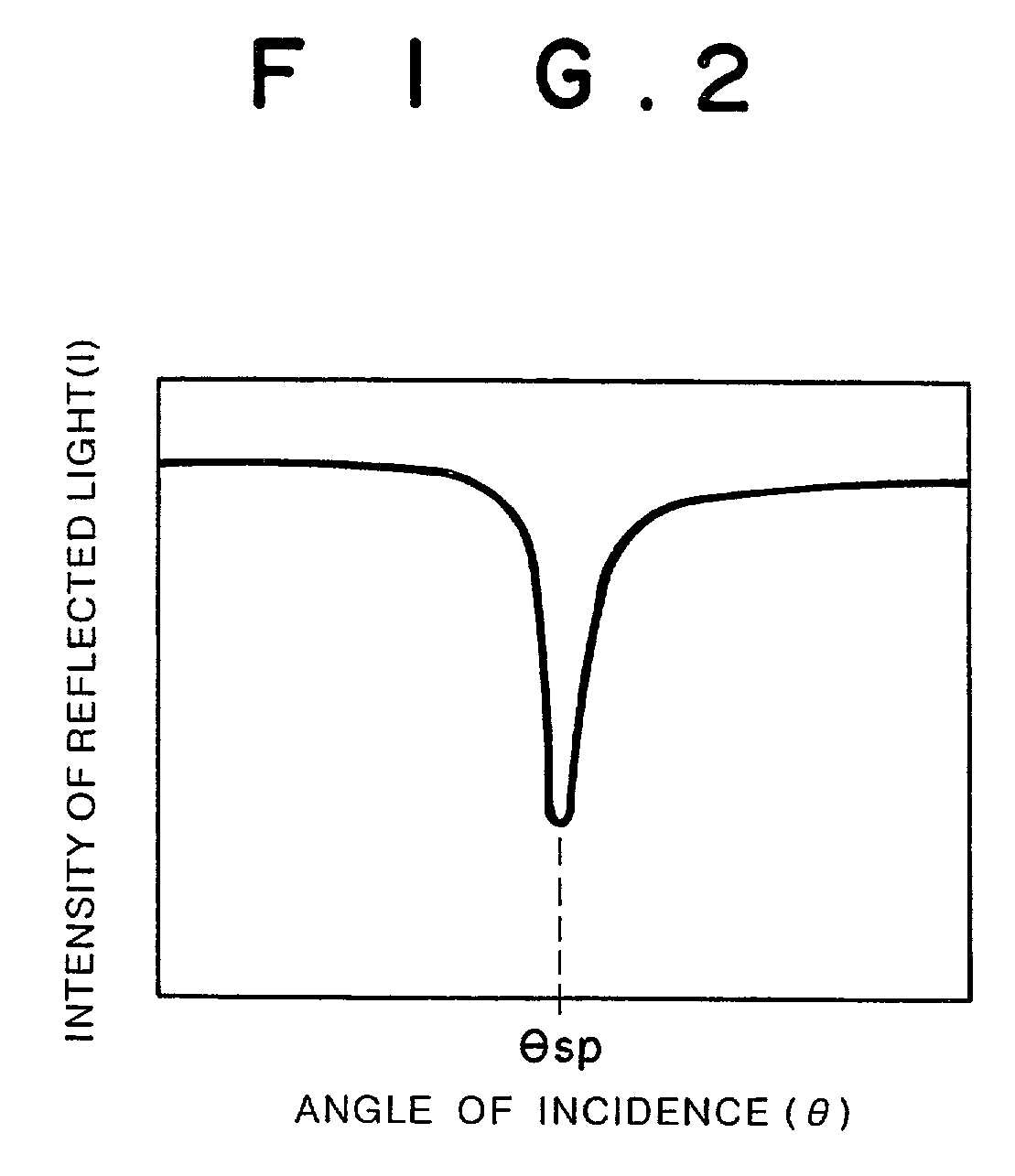Sensor utilizing attenuated total reflection
a total reflection and sensor technology, applied in the direction of phase-affecting property measurement, instruments, measurement devices, etc., can solve the problems of inability to accurately measure the refractive index distribution and the two-dimensional sensor, and achieve the effect of eliminating coherent noise, accurate measurement, and high degree of accuracy
- Summary
- Abstract
- Description
- Claims
- Application Information
AI Technical Summary
Benefits of technology
Problems solved by technology
Method used
Image
Examples
first embodiment
[0052]Referring now in greater detail to the drawings and initially to FIG. 1, there is shown a sensor utilizing ATR, in accordance with the present invention.
[0053]The sensor of the first embodiment is formed as the aforementioned surface plasmon resonance sensor. As shown in FIG. 1, the sensor has a transparent dielectric block 11 and a metal film 13. The dielectric block 11 is formed from synthetic resin such as polymethylmethacrylate (PMMA), etc., or optical glass such as BK7, etc., and is formed, for example, into the shape of a trigonal prism. The metal film 13 is formed, for example, from gold, silver, copper, aluminum, etc., and is mounted on the top face of the dielectric block 11. A sample 15 to be analyzed is disposed on the metal film 13.
[0054]The sensor is further provided with a laser light source 16 for emitting a light beam L; a collimator lens 17 for collimating the light beam L emitted divergently from the laser light source 16; a compensating prism 21 for compensa...
second embodiment
[0064]FIG. 3 shows the present invention utilizing ATR. Note in the figure that the same reference numerals are applied to the same parts as those in FIG. 1, and that a description thereof will not be given unless particularly necessary (the same applies to all of the following descriptions).
[0065]The second embodiment utilizing ATR is also formed as the aforementioned surface plasmon resonance sensor. The sensor of the second embodiment differs from the sensor shown in FIG. 1 in that a sensing medium 14 is mounted on a first dielectric prism 11 and that a sample 15 to be analyzed is placed on the sensing medium 14. The remaining points are constructed the same way as the sensor of FIG. 1.
[0066]The sensing medium 14 couples with a specific substance in the sample 15. As a combination of the specific substance and the sensing medium 14, there is, for example, a combination of an antigen and an antibody.
[0067]In the second embodiment, the refractive index of the sensing medium 14 vari...
fourth embodiment
[0073]The fourth embodiment is further provided with a second dielectric block 70 for image distortion compensation, and a second dielectric plate 71 joined with the bottom face of the second dielectric block 70 through refractive index-matching oil 72. A bottom face 71a (which is a face corresponding to the face of the first dielectric plate 61 constituting the interface 61a) of the second dielectric plate 71 is provided with a diffusing film 24.
PUM
| Property | Measurement | Unit |
|---|---|---|
| thickness | aaaaa | aaaaa |
| thickness | aaaaa | aaaaa |
| attenuated total reflection | aaaaa | aaaaa |
Abstract
Description
Claims
Application Information
 Login to View More
Login to View More - R&D
- Intellectual Property
- Life Sciences
- Materials
- Tech Scout
- Unparalleled Data Quality
- Higher Quality Content
- 60% Fewer Hallucinations
Browse by: Latest US Patents, China's latest patents, Technical Efficacy Thesaurus, Application Domain, Technology Topic, Popular Technical Reports.
© 2025 PatSnap. All rights reserved.Legal|Privacy policy|Modern Slavery Act Transparency Statement|Sitemap|About US| Contact US: help@patsnap.com



